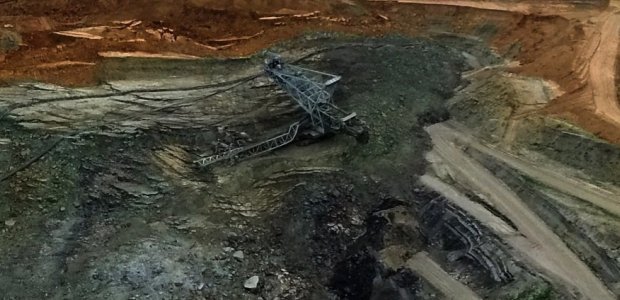Examinations by local authorities looking for the cause, or causes, of a major landslide that struck and wiped out the country’s Amynteo lignite mine on June 10 are making slow progress. No findings have yet to be delivered.
The main power utility PPC was the first to announce that it would assemble a committee to examine the landslide’s cause, noting the study would be completed by the end of June. Soon after, energy minister Giorgos Stathakis announced he would put together his own team of authorities to investigate the incident, while a third team of mining inspectors also announced it would look into the issue. No findings have yet to be delivered by any of these three teams.
According to latest reports, the mining inspectors are awaiting the release of PPC’s findings before they deliver their own. The energy ministry’s effort is believed to be at a preliminary stage as its team was assembled with some delay, on June 20.
PPC and the mining inspectors ought to have completed their investigative efforts and delivered their respective findings by now, given the initial announcements made.
From early on, Stathakis, the energy minister, has not been convinced by PPC’s claims, which have more or less presented the landslide as a geological phenomenon that could not be foreseen, even though the existence of fractures at the Amynteo mine had been known for decades.
Certain local authorities argue that the Amynteo mine landslide was bound to eventually occur, but the scale of the accident was unexpected.
Michalis Kavvadas, an Associate Professor at the National Technical University of Athens’s Department of Geotechnical Engineering, who is a member of the PPC committee assembled to investigate the landslide’s causes, had precisely predicted the incident’s timing but not its intensity and extent.
The professor had traveled to the mine to survey the situation on June 8 and 9, shortly before the incident occured. He had warned PPC officials that a landslide was just hours away. Kavvadas also advised staff on where to position large excavating machines so that they could be protected from the avalanche waiting to happen. This was not to be avoided.
The major landslide ended up covering a large part of the mine, equipment, and the lignite deposit, estimated at 28 million tons, depriving PPC’s two Amynteo power stations, both lignite-fired and possessing a total capacity of 600 MW, of needed fuel.
It was announced yesterday that Greek authorities have reportedly already begun work on an alternative follow-up sale package proposal of PPC units, a bailout requirement, as a result of the European Commission’s dismissal of an initial plan, which, according to officials in Brussels, failed to meet conditions that had been set.
Greece’s initial proposal, a lignite-only package, included the two Amynteo power stations and mine, despite the landslide. The two Amynteo units will most likely be replaced by other PPC units in the alternative plan.





